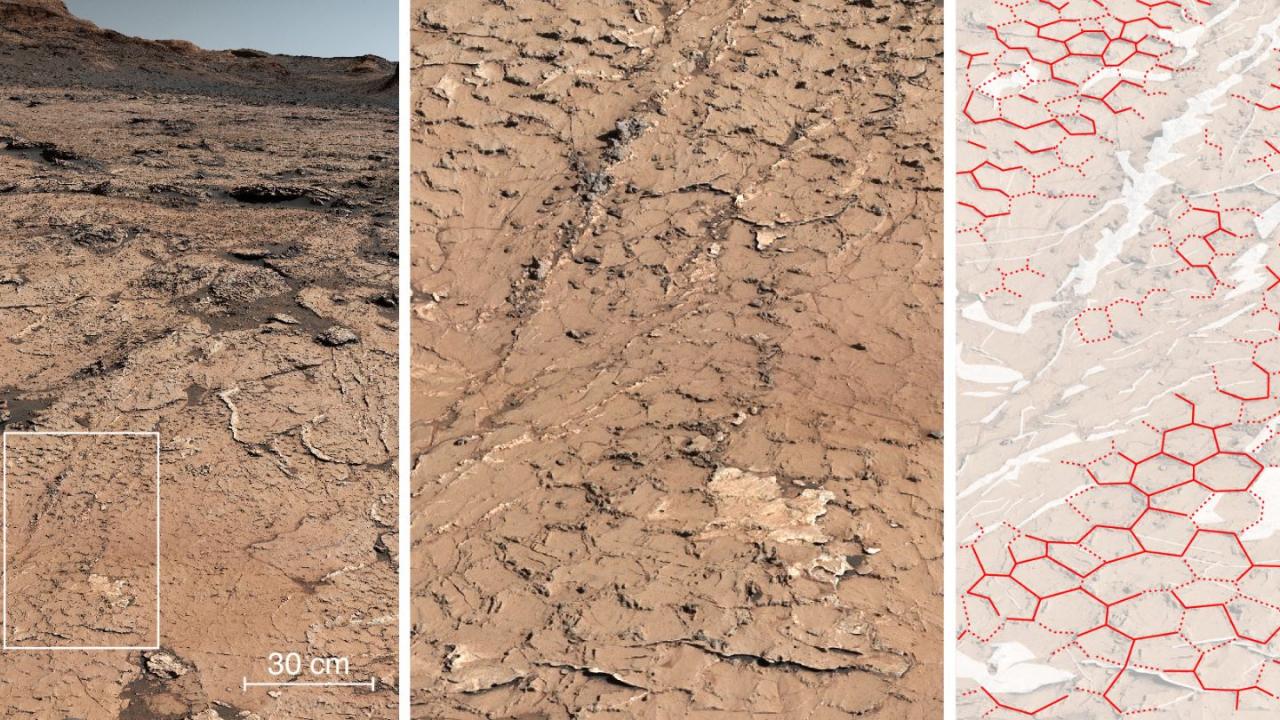NASA’s Curiosity rover has spotted clear signs that Mars experienced seasonal wet-dry cycles some 3.6 billion years ago, a discovery that bolsters the evidence that the planet was once hospitable to life, reports a new study.
In 2021, Curiosity drove by a patch of strange polygonal ridges that had never been seen on Mars before. Scientists have now concluded that the patterns are cracks formed by regular episodes of flooding and drying, a natural phenomenon that is known to be extremely conducive to life here on Earth.
Curiosity, which has been exploring an area called Gale Crater since 2012, has already amassed an enormous body of evidence that shows ancient Mars hosted was habitable to life as we know it. The fossilized cracks, formed in fresh mud, reveal that “repeated wet–dry cycles of regular intensity” could have created “an Earth-like climate regime and surface environments favorable to prebiotic evolution” on Mars, according to a study published on Wednesday.
“The pattern was striking,” said William Rapin, a CNRS research scientist at the Institut de Recherche en Astrophysique et Planétologie in Toulouse, France, who led the new research, in a call with Motherboard. “It's quite a unique formation. It's the first time we’ve seen that on Mars, actually, and it tells us a lot of details on how the climate was working at the time.”
“We've seen riverbeds and lakebeds,” he added, referring to Curiosity’s observations. “But the modality of how the climate was working was still a puzzle. Now, we see this pattern of cracks that really tells us there had to be seasons, a wet season and dry season, in a very regular fashion.”
For the first billion years of its life, Mars was a warmer and wetter world that hosted an atmosphere and a global magnetic field. Then, more than three billion years ago, Mars’ magnetic field collapsed, most of its atmosphere wafted into deep space, and its surface dried-up and became essentially frozen in time.
Because the Martian deep past is so well-preserved, scientists have been able to find clear signs that liquid water flowed and pooled across its surface for long periods, providing the right conditions for life to emerge—though nobody knows if aliens ever inhabited the planet.
But it’s possible that these features could have been created without any seasonal variation. For instance, early Mars could have been an icy world that was occasionally warmed by volcanic eruptions or impacting space rocks. These episodes could have melted out watery channels that carved riverbeds and lake beds into the Martian surface without the need for wet-dry cycles.
The cracks, however, strongly suggest that Mars experienced seasonal weather. As it happens, life on Earth is a big fan of these wet-dry cycles. Scientists have even found evidence that periodic hydration and dehydration is interlinked with the evolution of biomolecules that comprise the DNA that propagates all life on our world.
For this reason, the discovery of seasonal cycles on Mars both bolsters the odds that life might have existed on Mars, and opens a new window into the origin of life on Earth. Our planet is bustling with so much biological and geological activity that it has erased any evidence of the origins of life, but Mars preserves a “prebiotic” environment that could shed light on our own beginnings.
“We've been looking at Mars with Curiosity, and we've seen lakes that could have sustained life as we know it,” Rapin said. “But what's the origin? How life came to be in the first place is a different scientific question.”
“This story of what happens at the molecular level, the molecular evolution that leads to life is available on Mars, somewhere,” he concluded. “Now, with this discovery, we are closing in on that. This is a new perspective on the origin of life itself.”
Related posts:
Views: 0
 RSS Feed
RSS Feed

















 August 10th, 2023
August 10th, 2023  Awake Goy
Awake Goy 
 Posted in
Posted in  Tags:
Tags: 
















